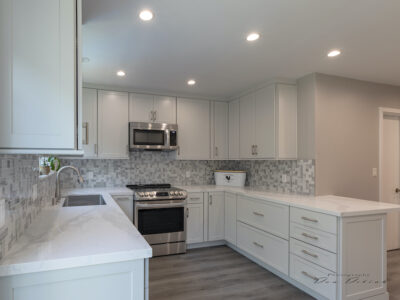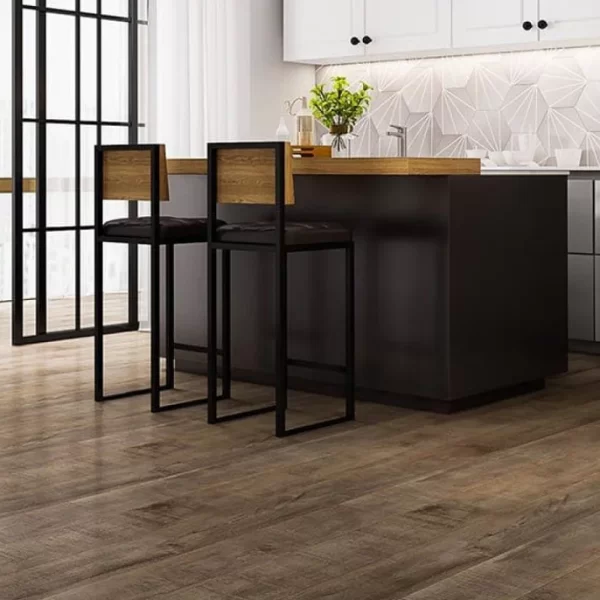
Introduction to Structural Design
Structural design is the art and science of creating a framework that supports and withstands various forces without failing. Whether it’s a towering skyscraper, a bridge spanning a river, or a simple residential house, structural design plays a crucial role in ensuring the safety and functionality of any built structure. It’s the backbone of construction, ensuring that buildings and other infrastructures stand the test of time and external forces.
What is Structural Design?
At its core, structural design involves calculating and planning the physical components of a structure. It’s about determining the best way to support and transmit loads, like the weight of the building itself, the occupants, and environmental forces, safely to the ground. Structural design ensures that every component, from the foundation to the roof, works together to maintain the integrity and stability of the structure.
Importance of Structural Design in Construction
Imagine constructing a building without considering how its weight would be distributed or how it would stand up to strong winds or an earthquake. The consequences could be disastrous. Structural design is essential to prevent such failures. It ensures that structures are not only functional and aesthetically pleasing but also safe and durable. Without proper structural design, buildings and other structures would be prone to collapse, endangering lives and property.
Fundamental Principles of Structural Design
Structural design is governed by a set of fundamental principles that guide engineers in creating safe and stable structures. These principles include understanding loads, selecting appropriate materials, and ensuring overall safety and stability.
Understanding Load Bearing
One of the key principles of structural design is understanding how loads are transmitted through a structure. Loads refer to the forces that a structure must support, and they can be categorized into dead loads (permanent/static), live loads (temporary/movable), and environmental loads (wind, earthquake, snow). Engineers must design structures to bear these loads without excessive deformation or failure.
The Role of Materials in Structural Design
The choice of materials is critical in structural design. Different materials have varying strengths, weights, and behaviors under stress. For example, concrete is strong in compression but weak in tension, while steel is strong in both. Understanding the properties of materials helps engineers select the right one for each part of the structure, ensuring that it can withstand the applied loads.
Safety and Stability Considerations
Safety is the top priority in structural design. Engineers must consider factors like stability, redundancy, and resistance to external forces. A stable structure is one that remains in equilibrium under all applied loads, while redundancy ensures that if one part fails, others can carry the load. Resistance to external forces like wind, earthquakes, and other environmental factors is also crucial to prevent catastrophic failure.
Types of Loads in Structural Design
Understanding the different types of loads that a structure will experience is fundamental to designing it effectively. Each type of load has unique characteristics and impacts the design in different ways.
Dead Loads
Dead loads are the permanent, static forces acting on a structure. These include the weight of the building materials themselves, such as walls, floors, and roofs. Dead loads are predictable and do not change over time, making them easier to account for in the design process.
Live Loads
Live loads are temporary or movable forces that a structure must support. These include the weight of people, furniture, vehicles, and other movable objects within or on a structure. Live loads can vary greatly and must be estimated carefully to ensure that the structure can safely support them.
Environmental Loads (Wind, Earthquake, Snow)
Environmental loads are external forces imposed on a structure by natural elements. Wind loads, for example, exert lateral pressure on a building, while earthquake loads create dynamic forces that can cause significant stress. Snow loads add additional weight, particularly on roofs. Structural design must account for these varying and sometimes unpredictable forces to ensure the structure’s longevity and safety.
Structural Design Process
The structural design process is a systematic approach that involves several stages, from the initial concept to detailed design and analysis. Each stage is crucial in ensuring that the final structure meets all safety, functionality, and aesthetic requirements.
Conceptual Design
The conceptual design is the first stage of the structural design process. It involves brainstorming ideas and sketching out the basic structure of the building. At this stage, engineers consider factors like the purpose of the building, site conditions, and the desired architectural style. The goal is to develop a clear vision of the structure’s form and function.
Detailed Design
In the detailed design phase, the initial concepts are refined into precise plans and specifications. Engineers calculate the dimensions and properties of all structural elements, such as beams, columns, and foundations. They also select materials and determine how each component will interact with others. Detailed design ensures that every aspect of the structure is carefully planned and optimized.
Analysis and Simulation
Once the detailed design is complete, engineers perform analysis and simulation to test the structure’s performance under various conditions. This includes calculating how the structure will respond to different loads and stresses, as well as simulating potential environmental impacts like wind or earthquakes. Analysis and simulation help identify and address any weaknesses in the design before construction begins.
Key Elements of Structural Design
Several key elements form the backbone of any structural design. Understanding these elements is essential for creating a stable and durable structure.
Beams and Columns
Beams and columns are the primary load-bearing elements in most structures. Beams typically support horizontal loads, while columns support vertical loads. The design of beams and columns must ensure that they can bear the expected loads without buckling, bending, or breaking.
Slabs and Floors
Slabs and floors are horizontal structural elements that divide a building into levels. They must be designed to support live loads, such as people and furniture, as well as dead loads, like the weight of the materials themselves. Proper design ensures that slabs and floors are strong and stable.
Foundations
The foundation is the part of a structure that transfers loads to the ground. It must be designed to support the entire structure’s weight and resist movements caused by soil conditions or environmental forces. A strong and stable foundation is critical to the overall stability of the structure.
Materials Used in Structural Design
The choice of materials in structural design is crucial, as different materials have different properties that affect the structure’s performance. Common materials include concrete, steel, wood, and composite materials.
Concrete
Concrete is one of the most commonly used materials in structural design. It is strong in compression, making it ideal for foundations, beams, and columns. However, it is weak in tension, so it is often reinforced with steel bars.
Steel
Steel is known for its high strength and flexibility, making it ideal for structures that need to bear heavy loads and resist bending. It is often used in beams, columns, and other critical structural elements.
Wood
Wood is a natural material that is often used in residential and light commercial construction. It is relatively strong and lightweight, but it can be susceptible to environmental factors like moisture and pests.
Composite Materials
Composite materials, such as fiber-reinforced polymers, are increasingly being used in structural design due to their high strength-to-weight ratio and resistance to corrosion. They are often used in specialized applications where traditional materials may not be suitable.
Structural Design Codes and Standards
Structural design codes and standards are guidelines that ensure the safety, stability, and reliability of structures. They provide minimum requirements for the design and construction of buildings and other structures.
Importance of Codes and Standards
Adhering to structural design codes and standards is essential for ensuring that structures are safe and meet legal requirements. These codes are developed based on extensive research and testing and are regularly updated to reflect new knowledge and technology.
Overview of Key Structural Design Codes
Some of the most widely used structural design codes include the American Concrete Institute (ACI) codes for concrete structures, the American Institute of Steel Construction (AISC) codes for steel structures, and the International Building Code (IBC), which provides comprehensive guidelines for all types of structures.
Software and Tools for Structural Design
Advancements in technology have led to the development of powerful software tools that assist engineers in the structural design process.
Popular Structural Design Software
Some of the most popular structural design software includes AutoCAD, STAAD Pro, SAP2000, and ETABS. These tools allow engineers to create detailed designs, perform complex calculations, and simulate the behavior of structures under various loads.
Advantages of Using Software in Structural Design
Using software in structural design offers several advantages, including increased accuracy, efficiency, and the ability to simulate and analyze different scenarios. It also allows engineers to visualize the structure in 3D, making it easier to identify and address potential issues.
Sustainability in Structural Design
Sustainability is becoming an increasingly important consideration in structural design. Engineers are now focusing on creating structures that are not only safe and functional but also environmentally friendly.
Eco-Friendly Materials
Using eco-friendly materials, such as recycled steel or low-carbon concrete, can significantly reduce the environmental impact of construction. These materials are designed to minimize energy consumption and waste, contributing to a more sustainable built environment.
Energy Efficiency Considerations
Energy efficiency is another key aspect of sustainable structural design. This includes designing structures that reduce energy consumption through improved insulation, natural lighting, and efficient HVAC systems. Energy-efficient buildings not only reduce environmental impact but also lower operating costs.
Challenges in Structural Design
Structural design is a complex process that involves overcoming several challenges. These include preventing structural failures and dealing with uncertainties in the design process.
Common Structural Failures and How to Avoid Them
Structural failures can result from design flaws, material defects, or construction errors. Common failures include buckling, cracking, and collapse. To avoid these, engineers must conduct thorough analysis, use high-quality materials, and follow best practices in construction.
Dealing with Uncertainties in Design
Uncertainties in structural design can arise from unpredictable environmental conditions, material properties, and load estimates. Engineers must account for these uncertainties by incorporating safety factors and conducting thorough testing and analysis.
Advancements in Structural Design
The field of structural design is constantly evolving, with new technologies and methods emerging to improve the safety and efficiency of structures.
The Role of Technology in Modern Structural Design
Technology plays a crucial role in modern structural design, from advanced software tools to innovative materials. These advancements allow engineers to create more complex and efficient structures, with improved safety and performance.
Future Trends in Structural Design
Future trends in structural design include the use of smart materials, such as self-healing concrete, and the integration of artificial intelligence and machine learning in the design process. These innovations promise to revolutionize the field, making structures safer, more efficient, and more sustainable.
Conclusion
Structural design is a complex and critical aspect of construction that ensures the safety, stability, and functionality of buildings and other structures. By understanding the fundamental principles, materials, processes, and challenges involved in structural design, engineers can create structures that stand the test of time and meet the needs of society. As technology and sustainability become increasingly important in the field, the future of structural design promises to be both innovative and exciting.











